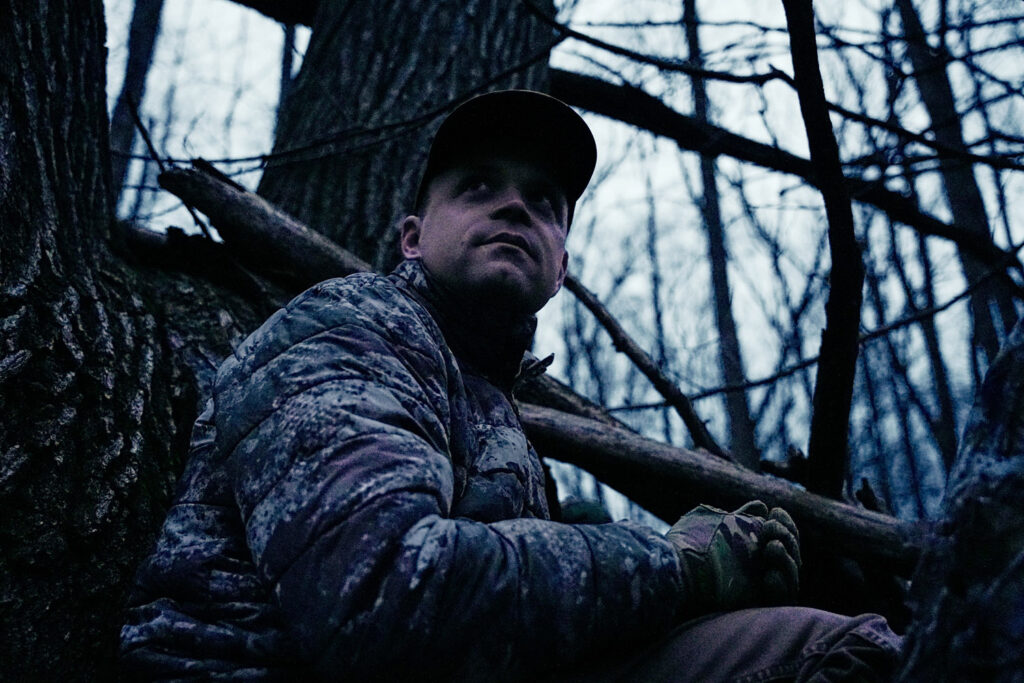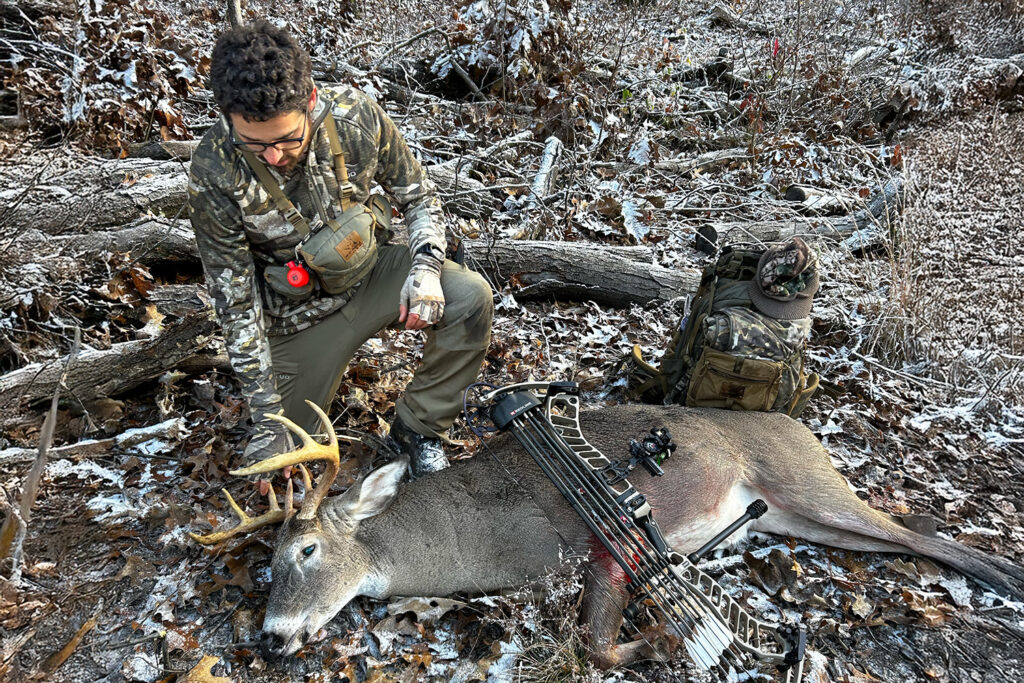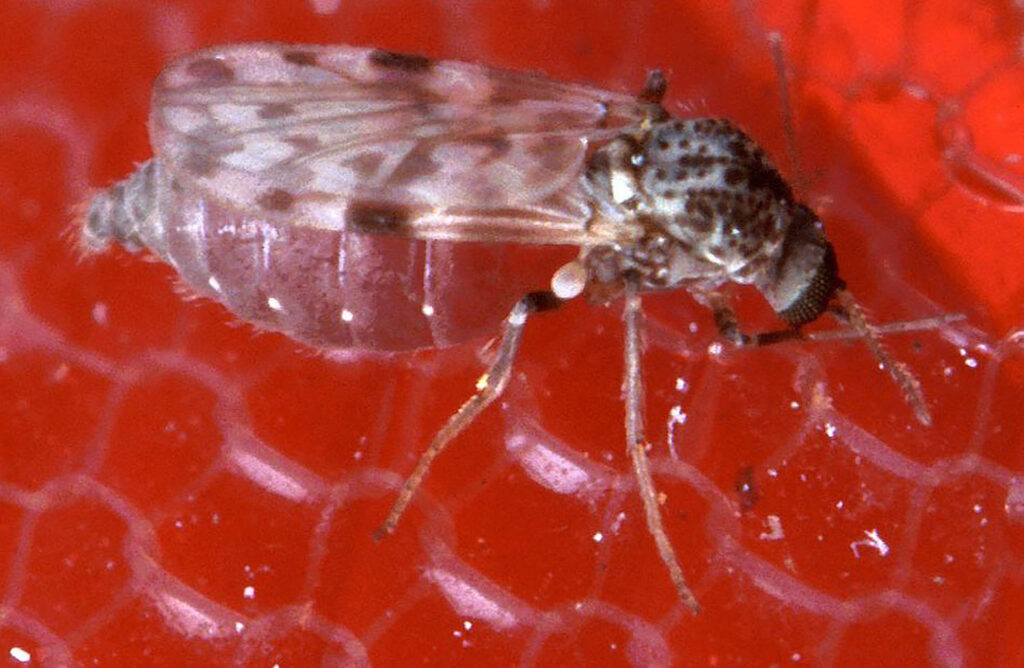Big Rapids — I knew everything I needed to know, and it didn’t matter.
We found the turkeys before dawn and started the dance. We called, they gobbled. They flew off the roost, and we hoped a tom would come square off with our jake decoy. The gobbles got louder, and we saw a black shadow scratching its way forward as dawn blossomed to morning.
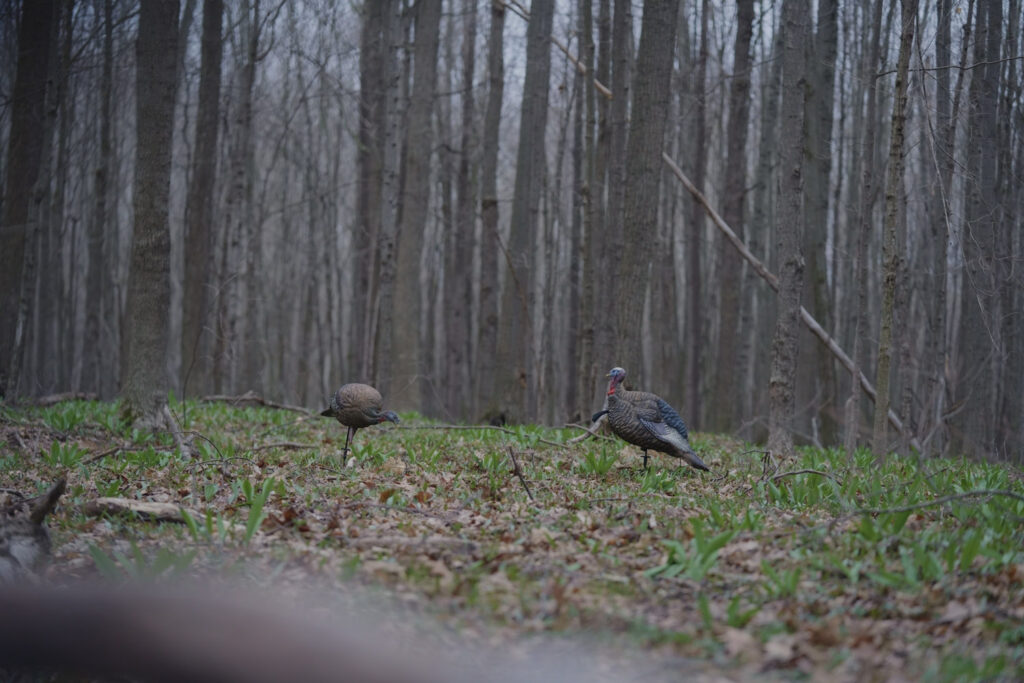
I couldn’t have had it easier. This was less hunting and more playing gunman. My guide planned where we should look, called in the birds, and took care of my gear. It was hunting on baby mode, and we had great luck.
We were on a turkey after only out an hour or two, and, because I had never fired a shotgun, I had training wheels on: a red-dot sight and a tripod to hold the gun steady. It was point-and-shoot hunting. Easier than Big Buck Hunter.
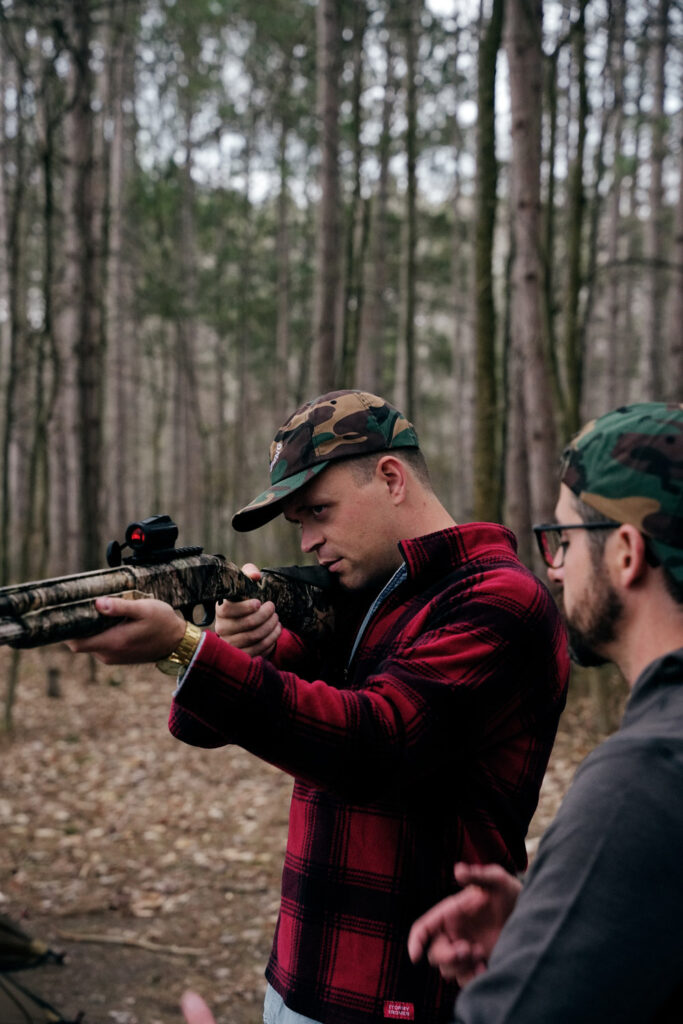
So why am I heading home without a fan, beard, spurs, and meat?
Turns out turkeys have incredible eyesight, telescopic even. Deer may smell you from a mile away and bound off at the crack of a stick, but if you so much as wave off a mosquito when a turkey is within 100 yards, it’s gone.
I knew this, and had been repeating it to myself like a mantra.

The complication was that my guide had been telling me about his hearing loss. He’d failed to cover his ears properly a few times when he was young, and now has significant loss in one ear, enough that he had to whip his head around to hear me at times with his good ear.
So when the gobbling came within 50 yards, I looked at the turkey, couldn’t see it, and scrambled to put in my earplugs. He may have been out of my line of vision, but I wasn’t out of his.

The jig was up. He gobbled off, the woods fell silent, and I had the sinking feeling that my best shot at landing a turkey this year had passed, spoiled by the tiny movement needed to put in some earbuds.
We still had 30 hours left to hunt, and in turkey hunting, there is always hope:
Maybe my guide can call him back with a few perfect clucks and cackles.
We could come back later and cut him off as he roosts for the evening.
The campground host saw a group of eight in a field the other night.
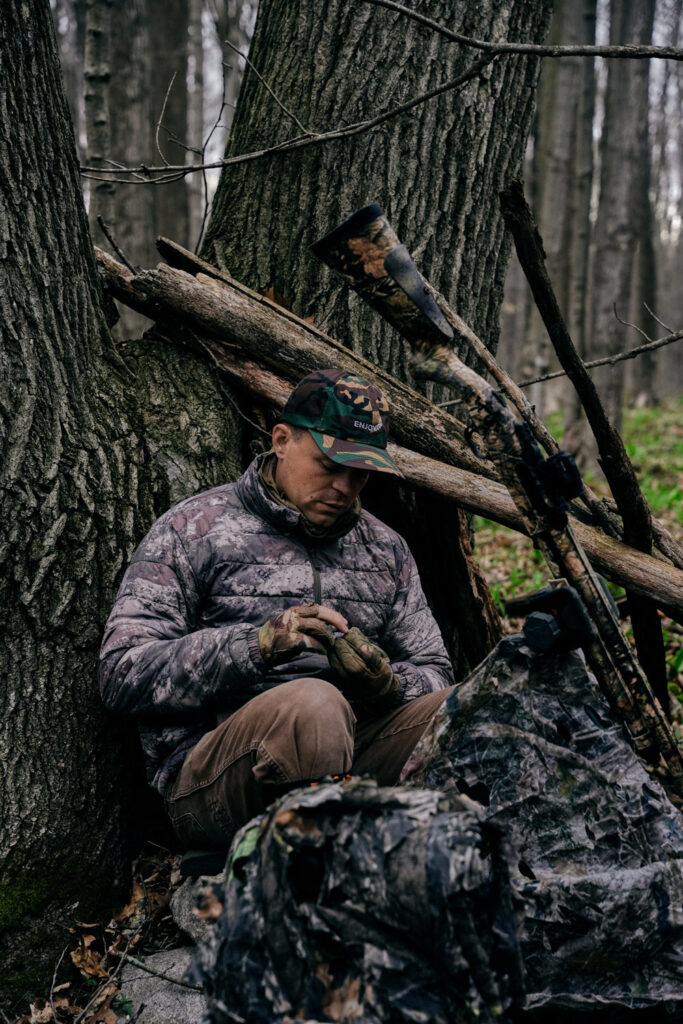
The only other tom we came close to was gobbling 100 yards down a slope and insistent that our decoy join him instead of the other way around. After a while, he walked off, possibly in the direction of another group of hunters. I hope he got fried up.
After that, we still had a half a day left. Surely more birds were left in the big woods, right?
Not for us. Though we spotted nearly all the wildlife Northern Michigan has to offer—songbirds, woodpeckers, grouses, a kestrel, sandhill cranes, groundhogs, a porcupine, a turtle, a salamander, and more whitetails than I could count—we never saw another tom.
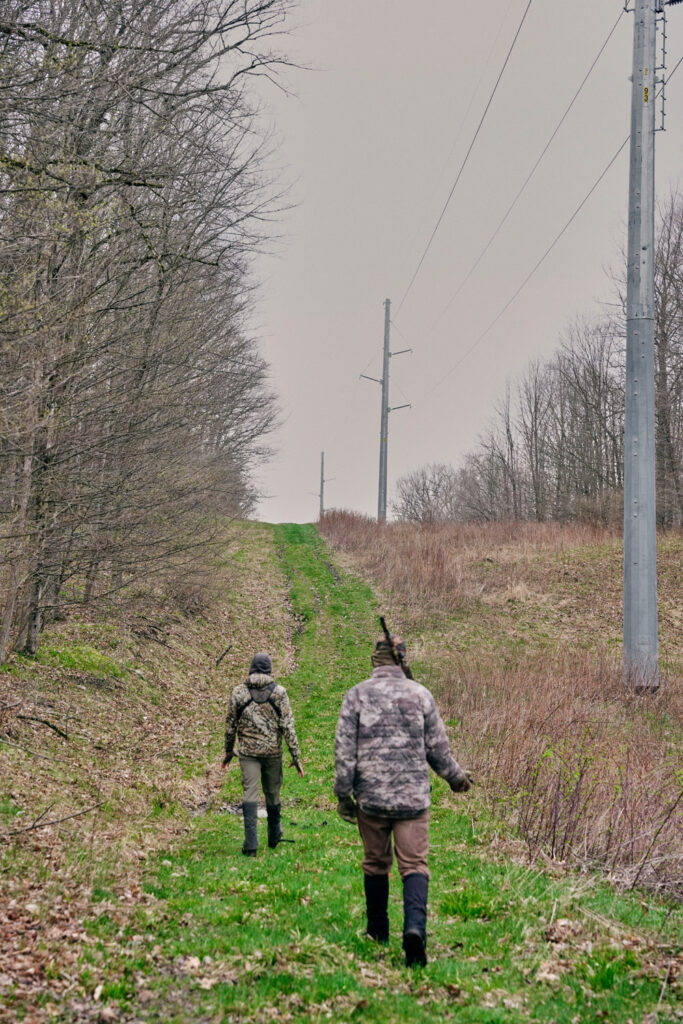
Oh sure, hens were abundant. One stood by the road as we drove by, looking like a kid who lost track of his mom at Target. We could have caught her with a cardboard box. Another scampered ahead of us, and we considered tracking her until she met up with her boyfriend.
But the hunt always has to end. You can only call into so many hardwood stands without hearing a gobble back before you begin to curse Michigan’s most magnificent game birds.
Some lessons are hard-learned, others easy. Freezing still at the first glimpse of a strutter isn’t one I’ll soon forget.
Mark Naida is editor of Michigan Enjoyer.
